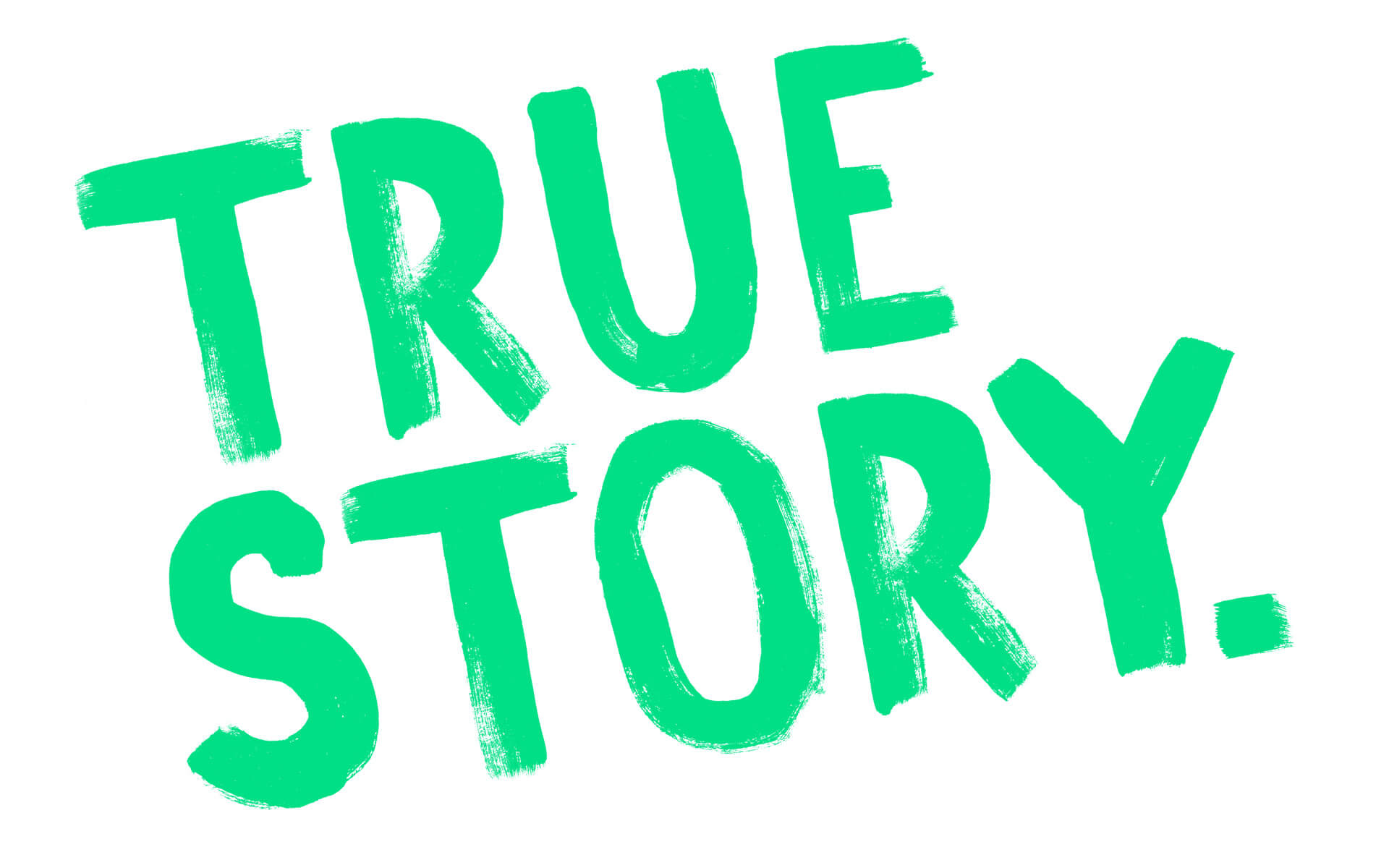True Story.
Our story is a true one. Born from the wish to develop durable, “indestructible” products, since 1982 our guiding principle and mission have been to get the best results for people and the environment.
The concept of “sustainability”, which first emerged in the 1990s and has really become in vogue during recent years, is part of our DNA. We are not jumping on the bandwagon because it’s cool. In short: ORTLIEB has always been genuinely sustainable.
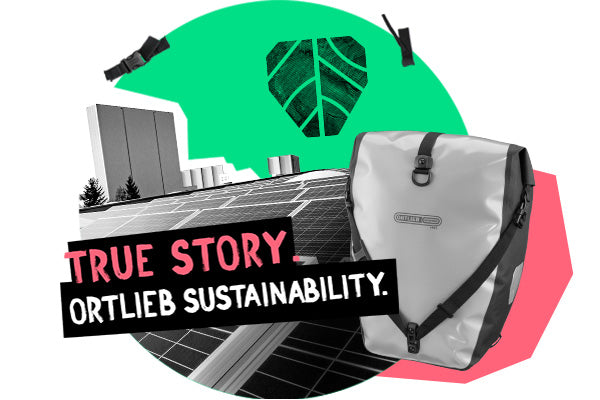
Really? Yes indeed!
Genuine sustainability has been a feature of every single one of our products since 1982. Keeping production in Germany? Is what we have always done. Durability? Is what makes our bags and backpacks so unique. Repair rather than disposal? That’s what we’ve been doing for more than 40 years. And with 18,000 repairs per year, we are true world champions in this discipline. This is precisely why the suitability of every single product for repair has top priority in each new development project. Selling new products is something everyone can do. We at ORTLIEB want your bags and backpacks to become true companions for decades.
We have undertaken to work sustainably in an authentic and honest way and there are still areas in which we have yet to arrive where we really want to be. You will find more on the subject here.
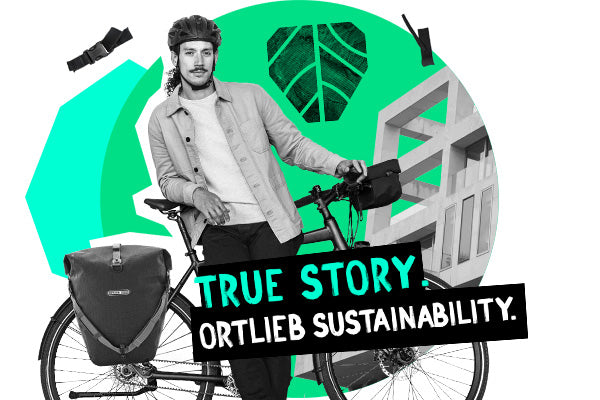
Our aims
We pursue these goals by considering that it makes economic sense and is really sustainable because this is the only way to make an impact in the long run.
To increase the proportion of regenerative energy that we produce ourselves from two thirds – today’s level – to 100% on the balance sheet by the end of 2025.
To not only become actually independent in energy terms by the end of 2030 at the latest, but also to produce more regenerative energy than we need ourselves.
To provide transparent communication of the CO₂e footprint as from 2023 and the life-cycle analysis as from 2025 for all products and to reduce both of them to zero where possible by the end of 2030.
To provide transparent communication of the CO₂e footprint as from 2023 and the life-cycle analysis as from 2025 for all products and to reduce both of them to zero where possible by the end of 2030.
Because it is in our control
We’re never satisfied with the status quo. Or simply use compensation payments to clear our conscience. That’s something anyone can do. We want to be even better, achieve more, react more sustainably. And report openly and honestly on how and what we do to achieve the goals we have set ourselves. We do of course wish to make an even greater contribution to the advancing climate change. The path to choose can only be to avoid emissions rather than pay compensation. After all, this is the only way to really set things in motion.
Our actions are guided by the UN sustainable development goals. The focus here is on the targets of “affordable and clean energy” and “responsible production and consumption”.
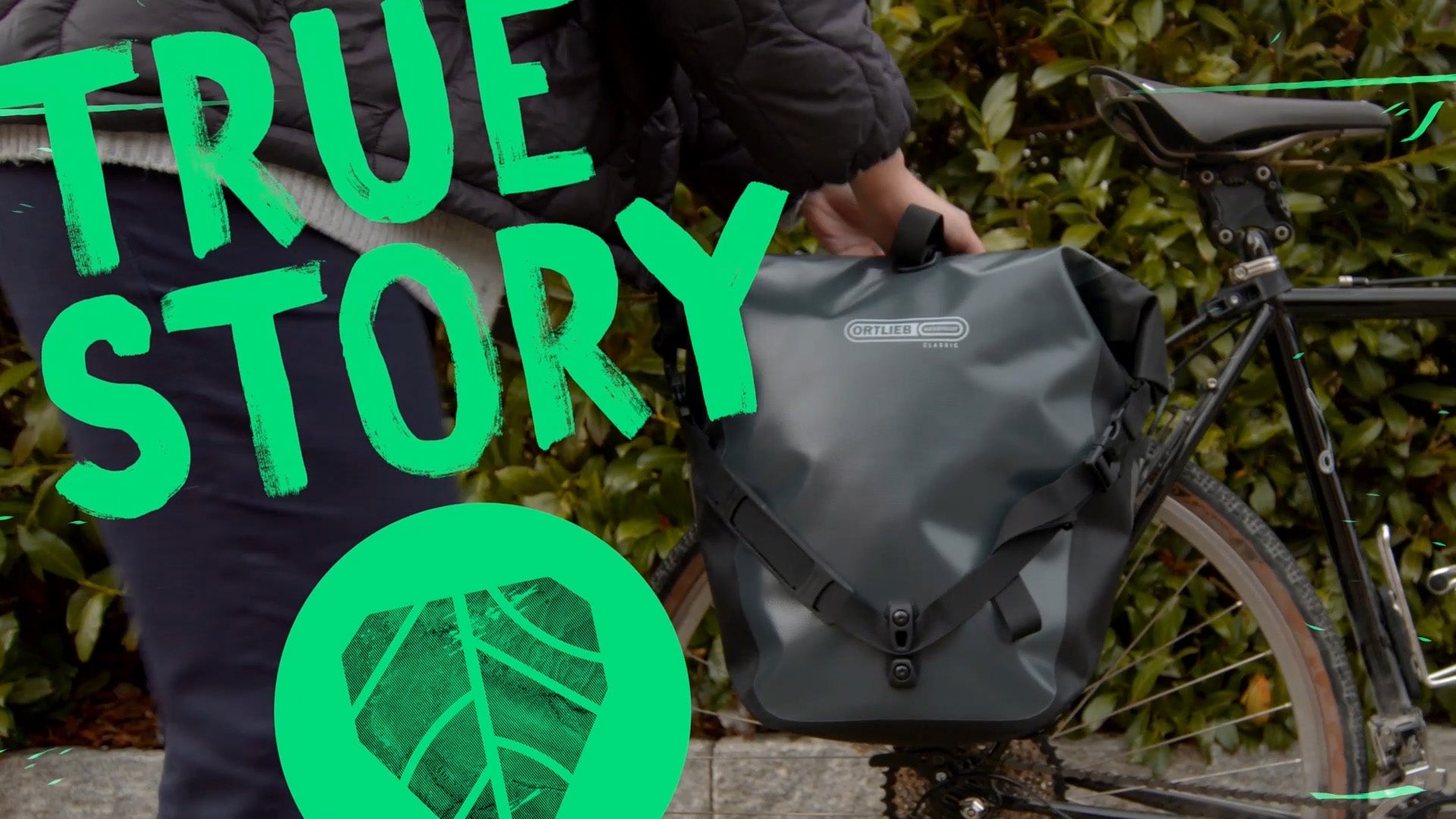
Made in Germany
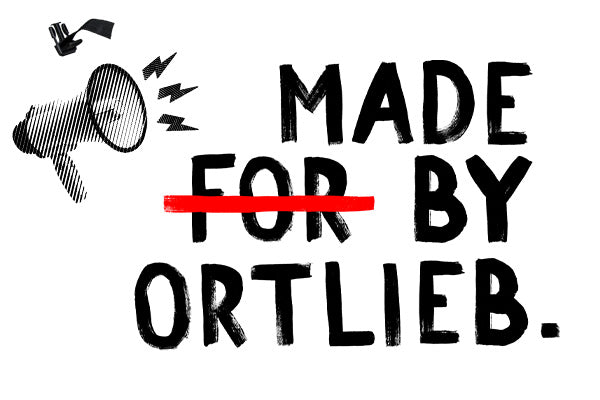
Since 1982, the year of our foundation, ORTLIEB has meant made in Germany. Our production at the Heilsbronn location is a real game-changer when it comes to our ability to control processes and production. In this way we can optimise, reduce and decisively influence our emissions. And then pass this pleasant feeling on to our customers.
Electricity is the most important source of energy for us in production yet at the same time responsible for large quantities of emissions. Our own photovoltaic plant is already supplying two thirds of our electricity demand today. Through expansion without additional land sealing, portions of our electricity requirements are generated in-house. Further expansion to achieve our goal of 100% self-produced renewable electricity is not (yet) possible. Grid capacities are a limiting factor. We are in discussions with the operator and the local authority regarding this matter.
Local Sourcing
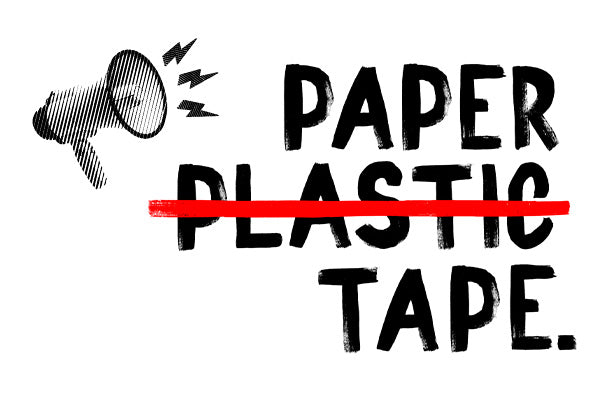
It is not only our production that takes place entirely in Germany, but nearly 70% of the materials that we use also originate from our home country. As a result, we guarantee extremely short transport routes and a traceable supply chain with high social and environmental standards. The choices made for our packaging and our shipping also have environmental impacts. Sometimes it is just small elements which then ultimately also have a noticeable overall effect. Since 2017, for example, we have been using paper adhesive tape for our packages – our shipping bags are made of FSC®-certified paper and the printing for our sales packaging is currently being converted from colour to black and white.
Yet we don’t have control of everything, such as in matters of shipping providers. Where possible, we dispatch our goods in a CO₂e neutral manner. In Germany, this has applied to packages since 2014 and also to pallets since 2018 – within Europe it has also been the case for the shipping of packages since 2018.
Durability
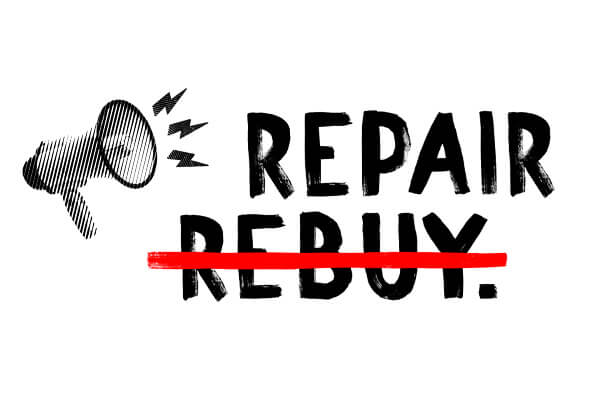
Our customers expect ORTLIEB products to be durable and repairable just in case something should happen to break. After all, the subject of product repairability has always been part of our genetic make-up. It is not without good reason that we have our Customer Service for repairs and upgrading. Did you know that we carry out more than 18,000 repairs per year? Even after the bags have undergone years of intensive use, our team is usually able to make them serviceable again. What’s more, many of the specialist retailers as well as the distribution partners in the various countries have been trained to carry out repairs locally.
And we are continuously working on expanding this service network. By doing so, we save our customers long waiting times and are able to shorten shipping routes. Our bags and backpacks are designed so that as many individual parts as possible can be replaced. In this way, we are actively helping to ensure that our products only rarely have to be replaced so that fewer new goods are produced. And the fact that our products carry a five-year guarantee while spare parts remain available for at least ten years after an item has been taken out of the collection must surely be common knowledge by now!
We are ORTLIEB
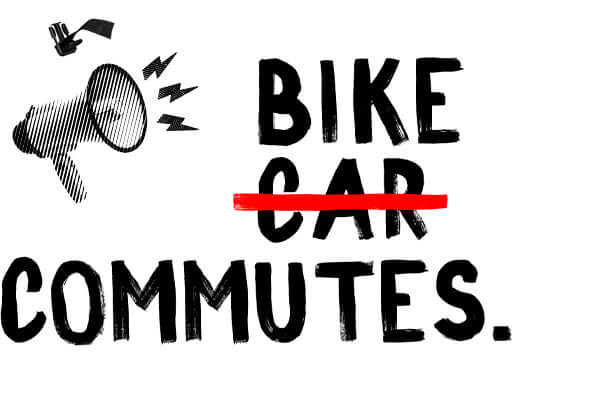
Even though we already comply with high social standards by having our production site in Germany, there is also room for adjustment in human resources, which is an important area and one that we are working on. And we’re not talking about 30 days’ annual leave, yearly profit-sharing or coffee (fair trade) at no charge. Of course emissions play a role here too and we have carried out analysis to find out exactly where we stand. In 2023, we will be publishing our Corporate Carbon Footprint for the first time ever.
In order to make commuting by bike as attractive as possible, there are of course things such as showers, lockers, shoe dryers, storage and repair facilities for bikes. In fact, back in 2015, these arrangement led to our being certified as a bike-friendly employer for the first time. It goes without saying that there are also other options such as the use of bike leasing and a public transport allowance. Employee journeys to work cause a lot of CO₂e, and we clearly have to improve here.

Since 1982, the year of our foundation, ORTLIEB has meant made in Germany. Our production at the Heilsbronn location is a real game-changer when it comes to our ability to control processes and production. In this way we can optimise, reduce and decisively influence our emissions. And then pass this pleasant feeling on to our customers.
Electricity is the most important source of energy for us in production yet at the same time responsible for large quantities of emissions. Our own photovoltaic plant is already supplying two thirds of our electricity demand today. Through expansion without additional land sealing, portions of our electricity requirements are generated in-house. Further expansion to achieve our goal of 100% self-produced renewable electricity is not (yet) possible. Grid capacities are a limiting factor. We are in discussions with the operator and the local authority regarding this matter.

It is not only our production that takes place entirely in Germany, but nearly 70% of the materials that we use also originate from our home country. As a result, we guarantee extremely short transport routes and a traceable supply chain with high social and environmental standards. The choices made for our packaging and our shipping also have environmental impacts. Sometimes it is just small elements which then ultimately also have a noticeable overall effect. Since 2017, for example, we have been using paper adhesive tape for our packages – our shipping bags are made of FSC®-certified paper and the printing for our sales packaging is currently being converted from colour to black and white.
Yet we don’t have control of everything, such as in matters of shipping providers. Where possible, we dispatch our goods in a CO₂e neutral manner. In Germany, this has applied to packages since 2014 and also to pallets since 2018 – within Europe it has also been the case for the shipping of packages since 2018.

Our customers expect ORTLIEB products to be durable and repairable just in case something should happen to break. After all, the subject of product repairability has always been part of our genetic make-up. It is not without good reason that we have our Customer Service for repairs and upgrading. Did you know that we carry out more than 18,000 repairs per year? Even after the bags have undergone years of intensive use, our team is usually able to make them serviceable again. What’s more, many of the specialist retailers as well as the distribution partners in the various countries have been trained to carry out repairs locally.
And we are continuously working on expanding this service network. By doing so, we save our customers long waiting times and are able to shorten shipping routes. Our bags and backpacks are designed so that as many individual parts as possible can be replaced. In this way, we are actively helping to ensure that our products only rarely have to be replaced so that fewer new goods are produced. And the fact that our products carry a five-year guarantee while spare parts remain available for at least ten years after an item has been taken out of the collection must surely be common knowledge by now!

Even though we already comply with high social standards by having our production site in Germany, there is also room for adjustment in human resources, which is an important area and one that we are working on. And we’re not talking about 30 days’ annual leave, yearly profit-sharing or coffee (fair trade) at no charge. Of course emissions play a role here too and we have carried out analysis to find out exactly where we stand. In 2023, we will be publishing our Corporate Carbon Footprint for the first time ever.
In order to make commuting by bike as attractive as possible, there are of course things such as showers, lockers, shoe dryers, storage and repair facilities for bikes. In fact, back in 2015, these arrangement led to our being certified as a bike-friendly employer for the first time. It goes without saying that there are also other options such as the use of bike leasing and a public transport allowance. Employee journeys to work cause a lot of CO₂e, and we clearly have to improve here.
A long way to go...
Authentically sustainable for us also means facing up to our weaknesses in an open and honest way and being able to speak about them. Whether it be the disposal of PVC, stitched panels from Asia or even the isolated use of plastic packaging. These are all issues that we can and want to improve, some things may only appear sustainable for our environment at first glance while others are not yet technically feasible. What’s more, any particular measure has to make economic sense without resulting in a price that is out of all proportion for our target group. There is a lot to improve, to set in motion and to optimize, if you have any questions or comments, please get in touch with us.
